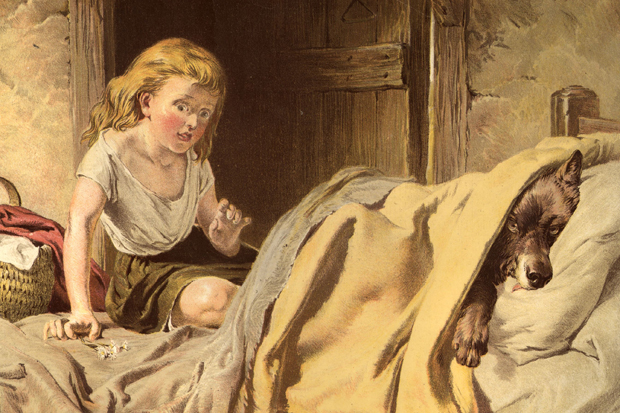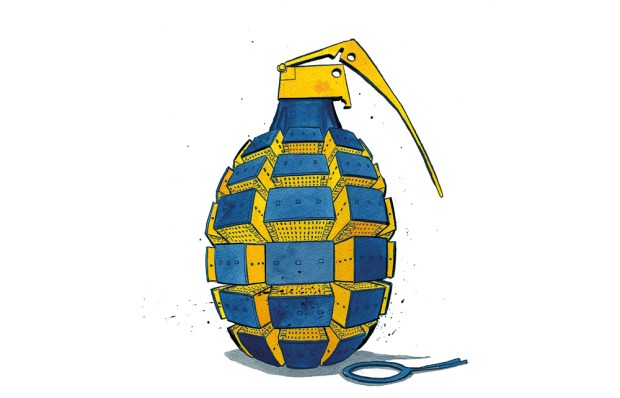Wolves have powerful symbolic meanings for humans. They are part of the mythology that defines us: Little Red Riding Hood, Romulus and Remus, the wargs in Tolkien, Mother Wolf in The Jungle Book, Maugrim in The Chronicles of Narnia. Wolves have profound resonance for us all.
Wolves intermittently break out in the stories we tell and are told; currently they have been doing their stuff in Game of Thrones and Twilight. And as Miss Jean Brodie said, for those who like that sort of thing, that is the sort of thing they like.
But do we really have to take the next step and fill our homes with wolves? Apparently we do. Since these entertainments entered British consciousness, there has been a great surge in demand for the wolf-iest dogs: huskies, malamutes and Saarloos.
Fair enough, if you feed them vast quantities of the right food and walk them for miles every day and build your life around their needs. Otherwise not. With the inevitability of night following day, animal welfare organisations like the Dogs Trust and Blue Cross report that wolfy dogs are being abandoned in unprecedented numbers. Battersea Cats and Dogs Home took in 66 huskies in just six months of last year. A six-day-old child was apparently mauled to death by her parents’ malamute, which takes folly to another level.
But there’s no end to our folly when it comes to animals. On fine days in ponds in certain parts of Britain you can watch red-eared terrapins emerge and bask in the sun. They came to Britain because of the Teenage Mutant Ninja Turtles. This was a manufactured craze involving comic books, cartoons, toys and films and the first wave hit us in the 1990s. Many people responded by buying baby terrapins: darling little things the size of a 50p piece. Alas, they can grow to the size of dinner-plates. When they got too much for their owners they were abandoned in ponds and lakes in city parks to gorge on tadpoles. A new Ninja Turtles film was released last year and the RSPCA was moved to issue a warning to parents against buying them as pets for a new generation of children. A few years ago an angler pulled a four-stone alligator-snapping turtle from Solihull reservoir.
The Harry Potter books and films inspired many families to get a Hedwig of their own: owls became fad-pets. An owl can live 20 years in captivity; they require commitment, proper feeding and will tend to decorate the ground beneath their perch in the most liberal fashion. Inevitably, there is now a parliament of unwanted owls across the country, one that was opened when their real nature proved a sore disappointment to the silly people who took them on.
Naturally, those who work in wildlife conservation try to find a meaningful use for our confusion between real and fictional animals. They hope that our fleeting interest in, say, the comedic lemurs in the Madagascar series of children’s films will lead to an interest in the nearly 60 species of real lemurs on the island. London Zoo now has a walk-through lemur enclosure. So, for that matter, does my local zoo at Kessingland in Suffolk; and here, I have seen how the athleticism of real animals can encourage a better understanding and a sense of ‘oneness’ with the non-human world.
Meerkats, similarly, were once familiar only to zoologists, but they’re now a must-have exhibit in many zoos. This can be traced to the influential wildlife documentary Meerkat Manor, and it gathered force when meerkats were used in a series of silly advertisements for the insurance-comparison site Compare the Market with the slogan ‘Compare the Meerkat!’
This is all very silly — an entirely frivolous way of dealing with living animals. This confusion between fictional and real animals doesn’t say much for our understanding of the world or of the creatures we share it with. The animal-as-toy notion has become part of national life and is inevitably followed by the animal-as-garbage phenomenon. Welfare organisations pick up the pieces.
But this is something more than an animal welfare issue. It’s not just about the relatively small number of daft people who fill their homes with wolves, terrapins and owls. That is just the extreme manifestation of something that lies deep in all humans and it is the idea that all non-human animals are ours to treat as we will: without any need for rights, consideration or common sense. They don’t matter. They can be cuddly toys, they can be jokes, they can be anything we want.
We are only just beginning to realise that our notions about the disposable nature of non-human species ultimately threaten not just their existence, but our own. We have extirpated vast acreages of forest and only comparatively recently learned that forest is important to the long-term interests of humankind: for carbon sequestration, flood prevention and regulation of the atmosphere. There is a continuum between the pet wolf and the degradation of the planet we live on. Some scientists now routinely refer to the current epoch as the ‘Anthropocene’, to reflect the idea that the human-worked changes to the planet are so far-reaching that they must be recognised in scientific terminology.
What links the wolf in the kitchen to the Anthropocene epoch is silliness. It starts with an inability to consider the interests of any species beyond our own and it ends up prejudicing the interests of our own species.
Got something to add? Join the discussion and comment below.
Get 10 issues for just $10
Subscribe to The Spectator Australia today for the next 10 magazine issues, plus full online access, for just $10.
You might disagree with half of it, but you’ll enjoy reading all of it. Try your first month for free, then just $2 a week for the remainder of your first year.














Comments
Don't miss out
Join the conversation with other Spectator Australia readers. Subscribe to leave a comment.
SUBSCRIBEAlready a subscriber? Log in